Camera Traps for Citizen Science
Camera Traps can empower local communities & schools to observe & learn about wildlife. We aim to create an affordable DIY solution for all.
Camera Traps can empower local communities & schools to observe & learn about wildlife. We aim to create an affordable DIY solution for all.
To make the experience fit your profile, pick a username and tell us what interests you.
We found and based on your interests.
cameraTRAPV2.inoArduino-keychain vs. code (to be edited).ino - 6.89 kB - 07/11/2016 at 08:41 |
|
|
powerCal.xlsxCalculation of battery life metrics.sheet - 13.20 kB - 07/11/2016 at 08:37 |
|
Just to provide a quick update on the project:
Thanks for everyone still interested in the project - let us know if you'd like to contribute!
As indicated in our first log, we started this project with two potential designs: one based on Arduino (requires more work for the user) and one with Raspberry (less work for the user).
First Raspberry prototype worked very well - however, Raspberry is a greedy little monster that consumes too much battery* !! Jauler has therefore been trying to hack it to make it less energy-greedy, but while this is providing a very resource intensive task (and one of questionable success), and a suggestion during our ThinkCamp Challenge emerged to try a different board, Jauler has now moved on to using this board (STMICROELECTRONICS STM32F429I-DISC1):

He is trying to load Linux on it, and then go from there! TBC!
* one of the goals, that also emerged in collaboration with MammalWeb.org (see our collaboration notes here), is to have the trap active in the field for a month or even longer at a time, while using standard (e.g. AA bateries). That requires a very energy-efficient solution.
MN has been working on the Arduino based prototype, that was initiatily supposed to cost less than $20 and be composed of these components:
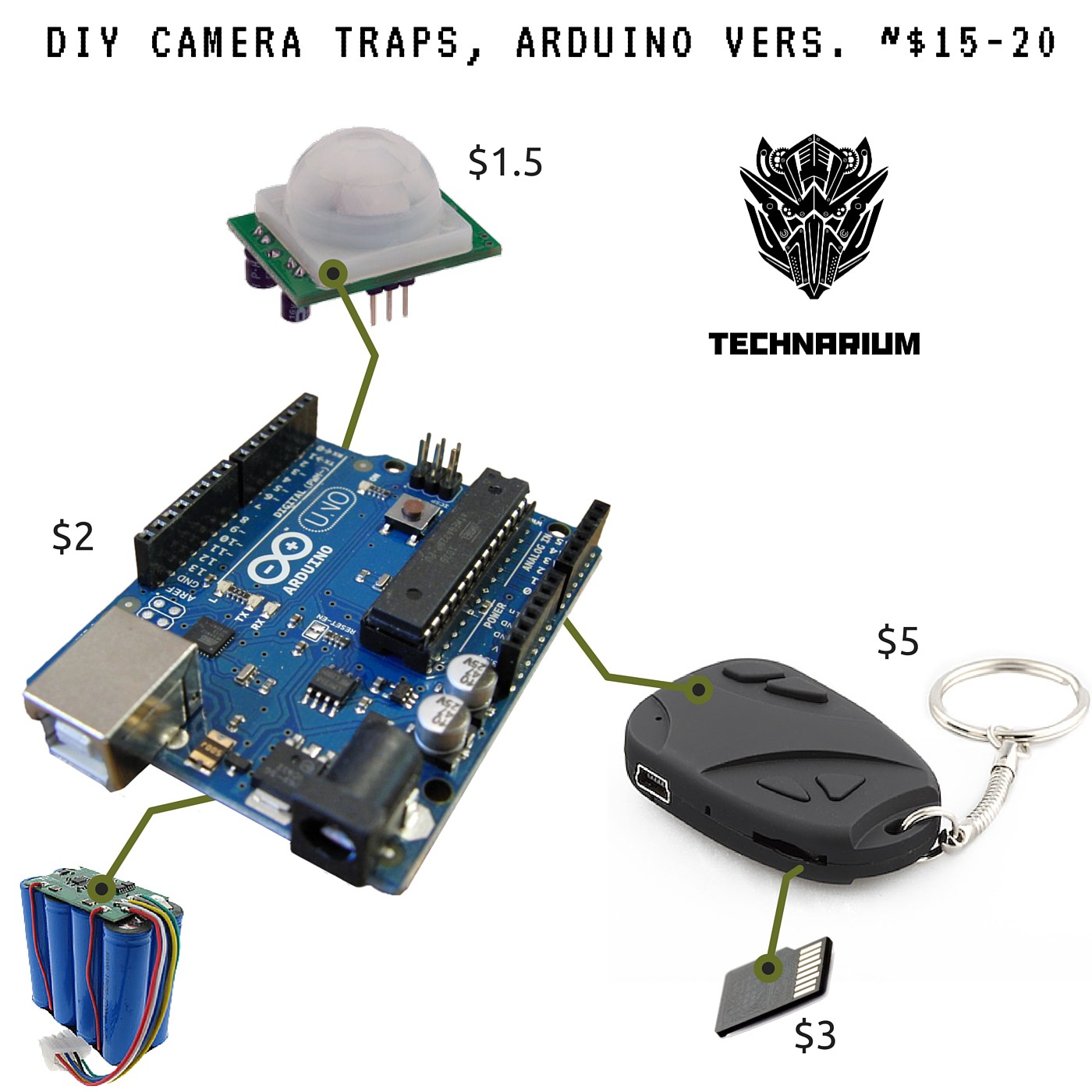
MN made an initial working prototype, and we even "trapped" our LOGIN Startup Fair visitors at Technarium booth the other month :p see the cool camera trap pic merges by MN here and here.
The camera we've been using:
By fiddling with some keychain camera variants, however, MN discovered that the cheap versions of the keychain camera are dealing very poorly with sleep-wake cycles, i.e. to save the battery* they need to be programmed to fall asleep, and waking up, in the end, takes at least 4 sec. Needless to say that is waaaay to much for trying to observe wildlife.
MN will share the code & more details about this keychain based prototype soon.
However, we have now dropped the keychain camera idea & moved on to a bit more expensive, yet more standard & accessible solution (especially for people with less electronics & programming expertise), including an Arducam.
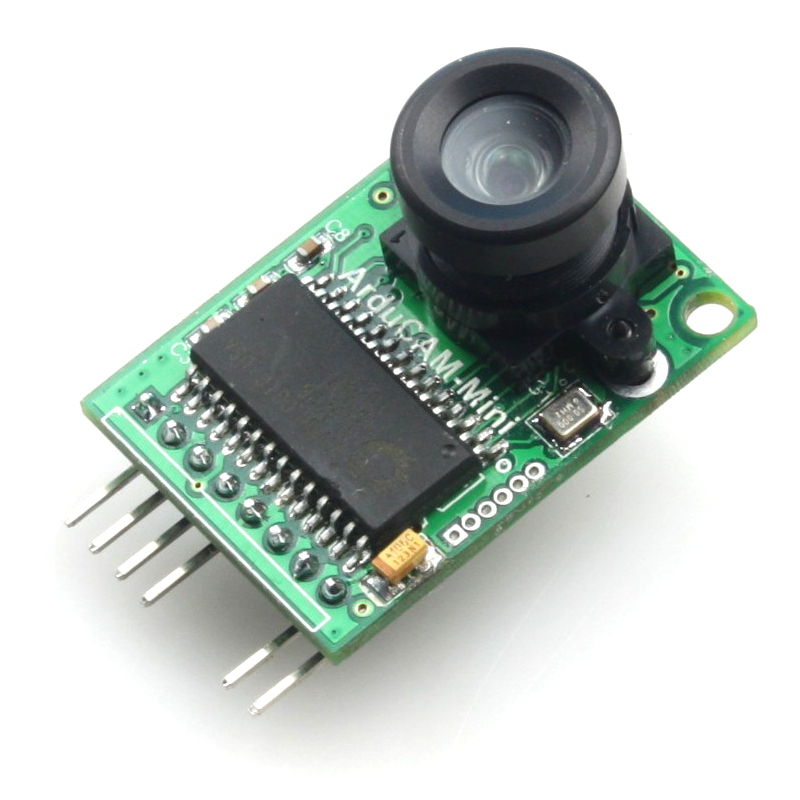
We think it will be a lot easier to accomplish quick reaction times with an Arducam, without using up too much battery. Only catch - ~$10 increased camera trap price, although we think it would still be doable under $30.
Our ordered Arducam just arrived, and we will report soon!
* one of the goals, that also emerged in collaboration with MammalWeb.org (see our collaboration notes here), is to have the trap active in the field for a month or even longer at a time, while using standard (e.g. AA bateries). That requires a very energy-efficient solution.
We have realized that multiple groups are currently trying to come up with cheap (and better) alternatives to current camera traps, including various projects in citizen science community, including MammalWeb.org and others (we were contacted by SciStarter too now, who are following our project).
In this regard, and with help of Margaret and Lucy from ECSA (European Citizen Science Association), we decided to run a Camera Trap Challenge at ECSA2016 ThinkCamp in Berlin, 21st May 2016! We ran it together with Pen from MammalWeb.org, and a bunch of local Berlin hackers joined.
Below are the goals we stated for the challenge collectively, and layed out by Pen:
The Challenge
Inspired by great existing projects, the challenge is to develop a fully free (as in freedom) DIY camera trap that meets these challenges:
1. Long battery life (a month or more).
2. Quick trigger speed (preferably <1⁄2 seconds from motion detection to photo acquisition).
3. Night vision (with infrared flash).
4. Lowest possible monetary total cost of ownership.
5. Rugged weatherproof enclosure.
6. Full documentation for all accompanying hardware and software, suitable for at least secondary schools.
7. Practice responsible ethics and citizenship by using and producing only fully free (as in freedom) hardware and software (no binary blobs).
For all of the above, only 7. is a requirement. Participants are of course welcome to tackle just one or all of the items depending on their interests and skill set. In addition, everyone is strongly encouraged to bring their own hardware, tools, and electronics to this ThinkCamp.
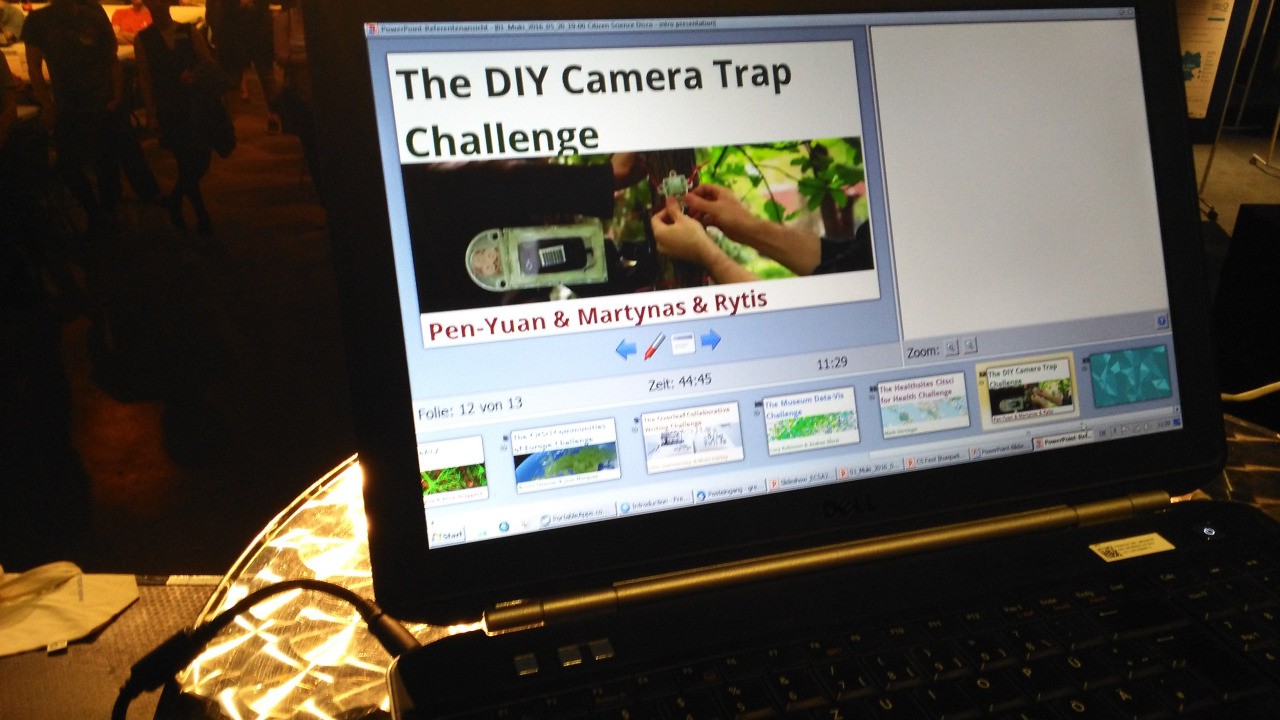
Egle & Martynas from our Hackaday Camera Trap project team participated, and Pen led the challenge. Bellow are some of the things that emerged (we did not have much time for actual hand-on hacking, but brainstorming instead):
Notes from Thinkcamp (Pen)
(Egle)
We had 2 of our own prototypes, NatureBytes prototype and a commercial camera. The latter was brutally taken apart [Martynas’ words] by the team (and Martynas later figured out what was broken).
After playing with all the toys, the challenge team also discussed the different features they’d like to have in a camera trap, and how cheap can it be made without compromising the quality of pictures.
In the end the team agreed to continue working on the prototypes, especially the Arduino version, which is the cheaper and more energy efficient alternative. Since we all agree the camera trap should be open source and tinkerable, it will be possible to adapt the Arduino-based core of the trap to be used with different components, such as a better camera....
Read more »We met at Technarium for World Create Day, to hack the first prototypes of the two designs we were considering.
Jauler came up with a nifty code that connects Raspberry Pi to a motion-sensitive house alarm unit and a webcam and captures photos responding to movement, with 1-2 sec delay!
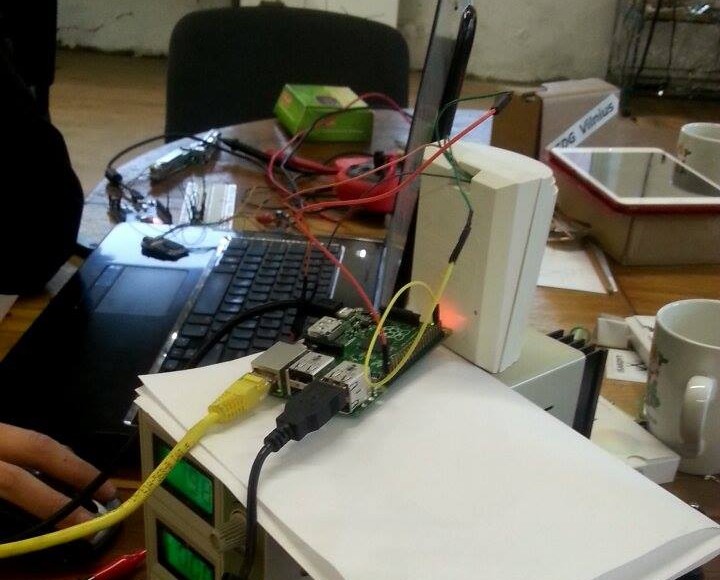

Our code is here: https://github.com/Jauler/CameraTraps
We still need to work out:
1) how to reduce the photo delay
2) a battery and a power saving plan that would be durable enough for hours of observation
by MN is still working on the KeyChain-Arduino version - TBC !
Overall - great progress on World Create Day!!
Came up with two possible designs:
1) Raspberry Pi approach:
Pros:
+ can connect to any WebCam (or any additional tools if necessary) via USB
+ can be connected straight to a monitor for analysis later
+ would not consume too much battery power
+ can be programmed to stand by (save energy) when there is no action, and woken up again to take the picture
+ easier to reproduce and build yourself
+ can program anything on Linux
Cons:
- difficult to get Raspberry Pi Zero
- would take time to program on Linux
2) KeyChain Camera approach:
Pros:
+ cheap parts
+ easier to get the parts
+ there are also better KeyChains with PIR included etc. – but more expensive
+ easier to program
+ uses less battery life
Cons:
- would need to install a bigger battery
- requires soldering
- photo resolution not so great
Create an account to leave a comment. Already have an account? Log In.
Most effort seems to be toward reducing power requirement. What about replenishing power in the field (though adds cost) - e.g., https://www.circuitspecialists.com/sc10050-arduino-compatible-solar-cell.html?otaid=gpl&gclid=Cj0KEQjwh428BRCnvcyI-5nqjY4BEiQAijebwjq7ckG6ECLZchxsaOSTPiuktLofklzIyOnDcXtAbCwaAixw8P8HAQ
Now that Rpi Zero has camera connector, this project could use the older Camera v1 that goes under $10 when bought in bulk :)
Well USB cameras are cheaper, we even managed to buy some for 1.5$, image quality is not very high, though... On the other hand 20$ budget does allow for a bit better cameras :).
But right now I am trying to reduce power consumption while device is idle. Unfortunately raspberry pi is not optimized very well for low power scenarios... And its closed source parts of SoC does not help :/.
Hmm I probably should write an update log about this sometime :D
Very cool project! This could also be used as a timelapse camera with long life!
I wonder if combining ESP 8266 wifi chip with ArduCam (or any serial camera) could also achieve the same goal since ESP8266 has very good, long life in deep sleep and can be programmed to awake every N minutes.
For example, here is how to put the chip in deep sleep mode, giving you months of controlling things: https://tzapu.com/minimalist-battery-powered-esp8266-wifi-temperature-logger/
And here is how to use ArduCam with ESP8266 chip to act as a web cam! http://www.arducam.com/arducam-supports-esp8266-arduino-board-wifi-websocket-camera-demo/
Nice idea :). Although this makes harder to keep our price goal of $20,
MN probably could comment more on these ideas as he is the one making arduino prototype.
On the other hand adding GSM modem to Raspberry Pi prototype would allow to make tweeting or instagraming camera trap :D. But then price would exceed $20.
Become a member to follow this project and never miss any updates
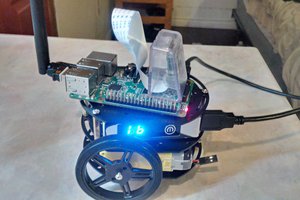
 Brenda Armour
Brenda Armour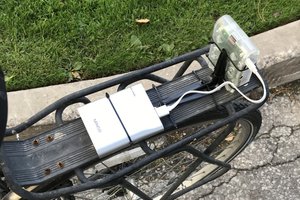
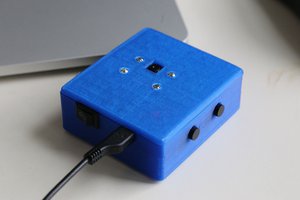
 Connor Yamada
Connor Yamada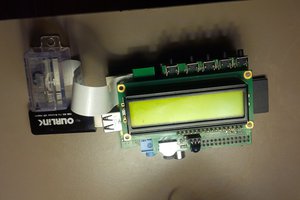
Might be relevant http://orbides.org/lapse_camera.php?lng=eng
AFAIK - there is no simple solution that will consume virtually no power while waiting but also boot up fast if you are considering SBC and USB cameras.